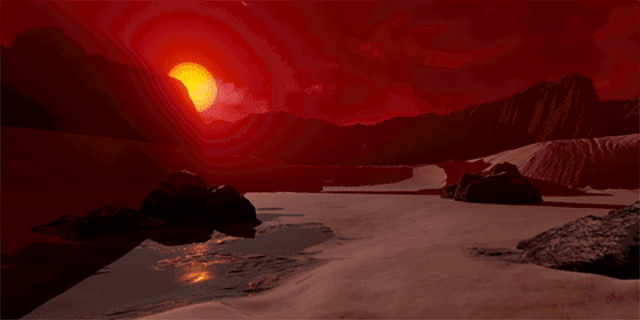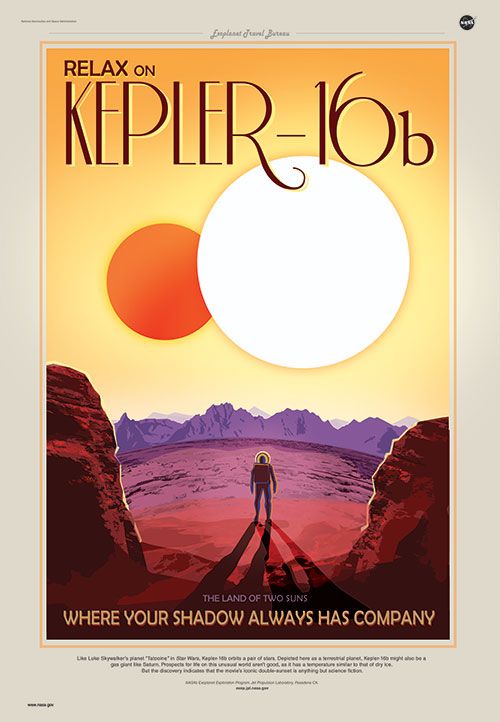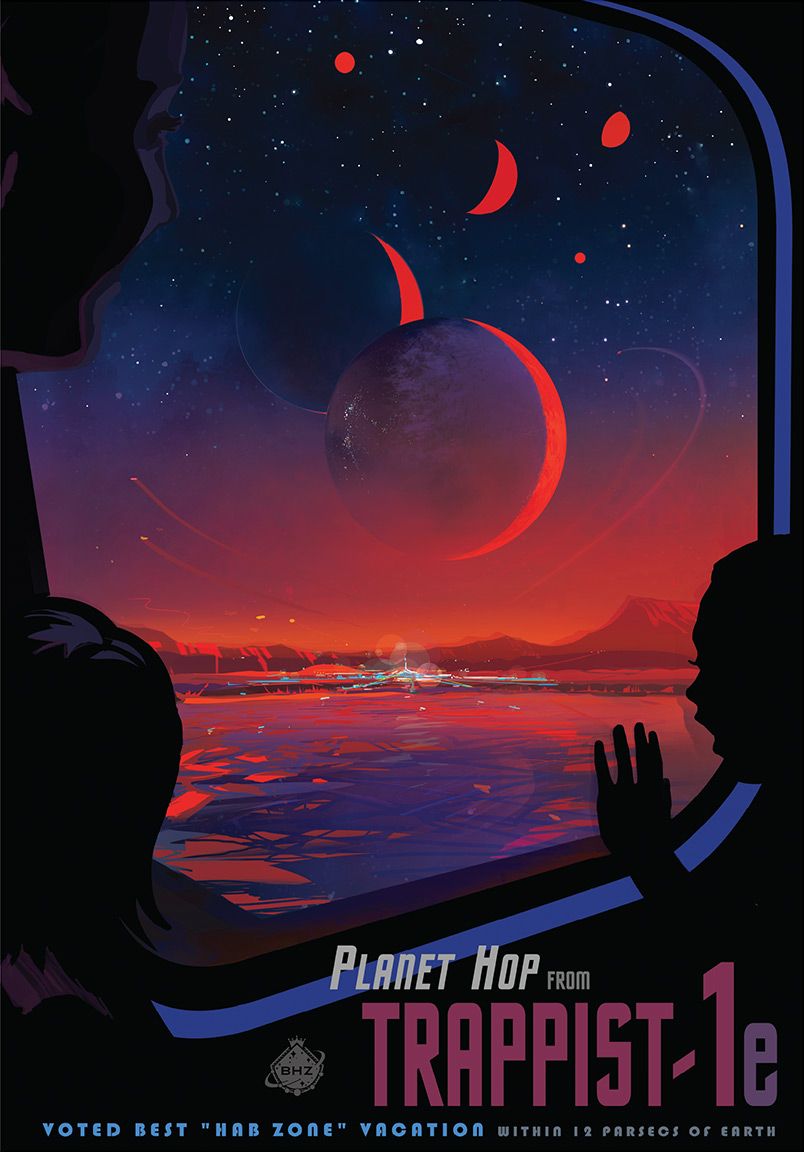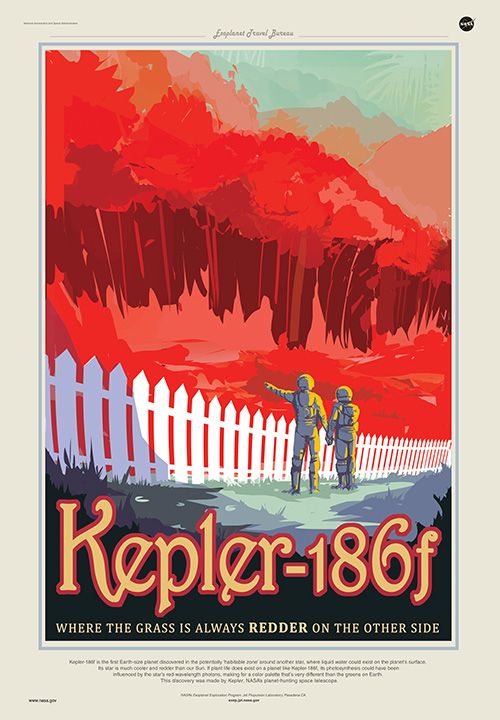NASA’s New Exoplanet Travel Bureau Lets You ‘Tour’ Far-Distant Planets In 360 Degrees
Eager space tourists can now visit sunny Kepler-186f, a moon of Kepler-16b or the Earth-like TRAPPIST-1e virtually
/https://tf-cmsv2-smithsonianmag-media.s3.amazonaws.com/filer/c7/f6/c7f6d024-7688-4a8b-9a59-895f30ab8cf2/exoplanet20180523-16.jpg)
TripAdvisor Exoplanet Reviews
Kepler-16b
“Cool Double Shadows:” 5 Stars
I recently visited one of the moons of Kepler-16b, a Saturn-mass exoplanet 200 light years from Earth. I had been super-psyched to visit Kepler-16b ever since it was discovered in 2011 as part of NASA’s Kepler Mission. But I was bummed to discover you can’t visit Kepler-16b itself (it’s a gas giant, and not habitable – I just wish I’d known this before I paid the non-refundable rocket deposit). But the moon turned out to be great: the double sun means you’ve got two shadows! And the view of the planet makes for awesome selfies.
TRAPPIST-1e
“Way Too Similar to Earth:” 2 Stars
OK, if I wanted to visit a planet like Earth I could have just stayed home! Seriously, TRAPPIST-1e is basically the same size as Earth, and only 40 percent less mass. It’s even got hypothetical water! Disappointing. The only thing I liked was the red sky. I got bored after an hour and tried reading the book I’d brought, but the faint light from the dim red dwarf star makes it impossible to see. I’d been planning on taking my mother to visit the other six Earth-sized planets in the TRAPPIST system for her birthday next year, but now I’m thinking we’ll just go to Branson instead.
Kepler-186f
“Be Sure to Stay on the Sunny Side!” 4 Stars
Word to the wise: be careful to book your Kepler-186f trip through a travel agent who understands tidal locking. It turns out, Kepler-186f doesn’t rotate, and we wound up on the freezing, eternally dark side. We had to pay through the nose to move to the continuous daylight side, which is SO much nicer.
Haven’t planned your summer travel yet? Consider visiting an exoplanet, one of the thousands of planets outside our solar system discovered in recent decades through NASA telescope missions. See blood red skies and stars visible in daytime, and travel an entire year’s rotation around the star in barely a week.
NASA has launched the Exoplanet Travel Bureau, a visualization tool that allows users to explore the surfaces of three exoplanets: Kepler-16b, Kepler-186f, and TRAPPIST-1e. The 360-degree visualizations, which can be seen on your computer, phone, tablet or using a virtual reality headset, are artists’ renderings—there are no photographic images of these planets, so the graphics are based on hypotheticals. You can change the scene by adding or subtracting hypothetical atmospheres, creating skies, clouds and weather.
The tool is based on a series of retro-futuristic exoplanet travel posters NASA released several years ago. The posters proved extremely popular, and the team decided to expand the idea.
“We thought, ‘why don’t we combine the exoplanet travel posters with virtual reality so we’re not just advertising these exotic exoplanet travel destinations, but giving a people a way to visit,’” says Randal Jackson, manager of the web studio at NASA’s Jet Propulsion Laboratory.
There’s a lot of educational information embedded in the visualization experience, Jackson says, which allows users to learn more about astronomy, physics and space exploration. The team hopes the tool will be used by everyone—children, students, science fans, sci-fi aficionados.

There will likely be many more exoplanets discovered in the future, as NASA continues to develop new telescopes and other instruments to measure far-distant space objects. Jackson characterizes the past several decades as a “gold rush” of exoplanet discover—the first exoplanet was only discovered in 1992. Today, nearly 4,000 have been found. NASA’s recently launched its TESS (Transiting Exoplanet Survey Satellite) telescope with the hopes of discovering thousands more planets around nearby bright stars. Another telescope, the James Webb, is scheduled for a 2020 launch date. It’s intended as a successor to Hubble, and may capture direct images of exoplanets.
So why does NASA bother searching the skies for exoplanets so far away we’ll never be able to visit them outside of virtual reality?
Arielle Samuelson, a web editor at the Jet Propulsion Laboratory, says, “I think it sort of goes back to Carl Sagan, who put it really beautifully.” Paraphrasing the great astronomer, she adds, “Our planet is just a small speck in the universe, so the more we learn about the planets outside the solar system, whether they look like Earth or not, the more we’re learning about our own world.”
/https://tf-cmsv2-smithsonianmag-media.s3.amazonaws.com/accounts/headshot/matchar.png)



/https://tf-cmsv2-smithsonianmag-media.s3.amazonaws.com/accounts/headshot/matchar.png)